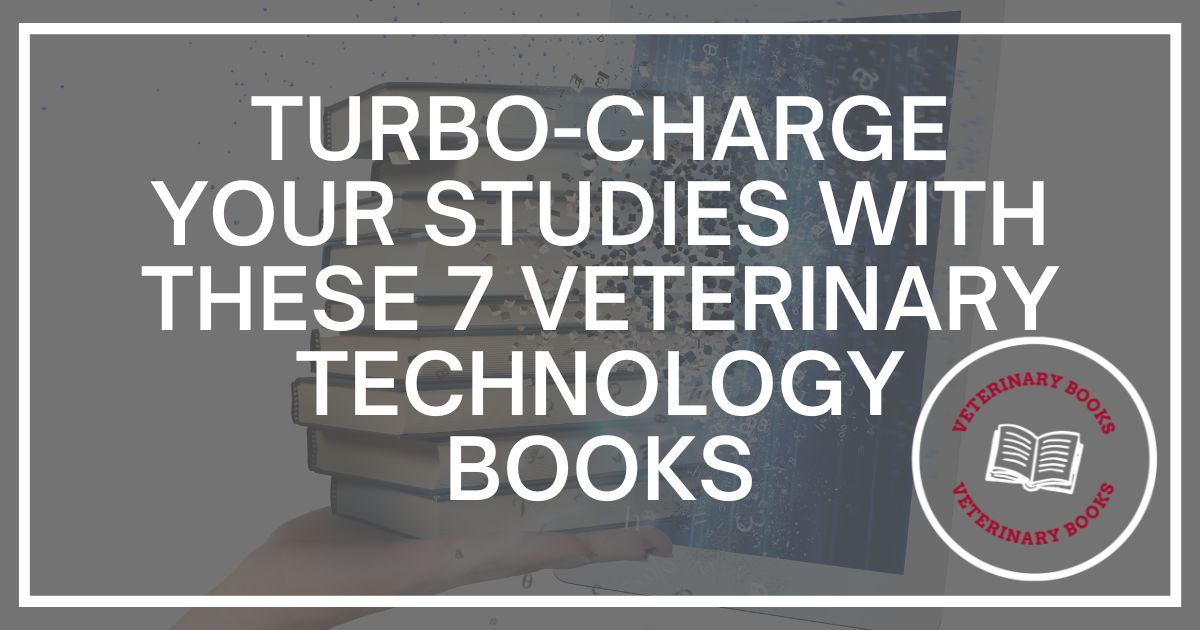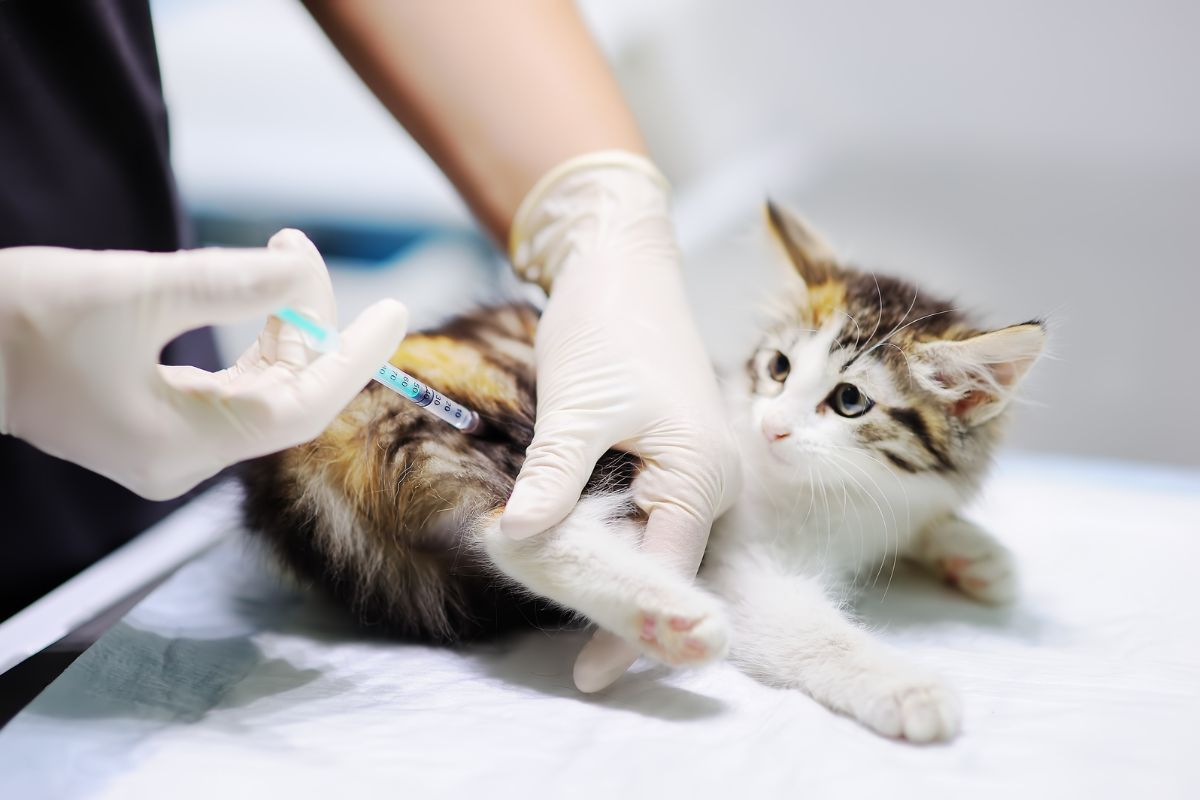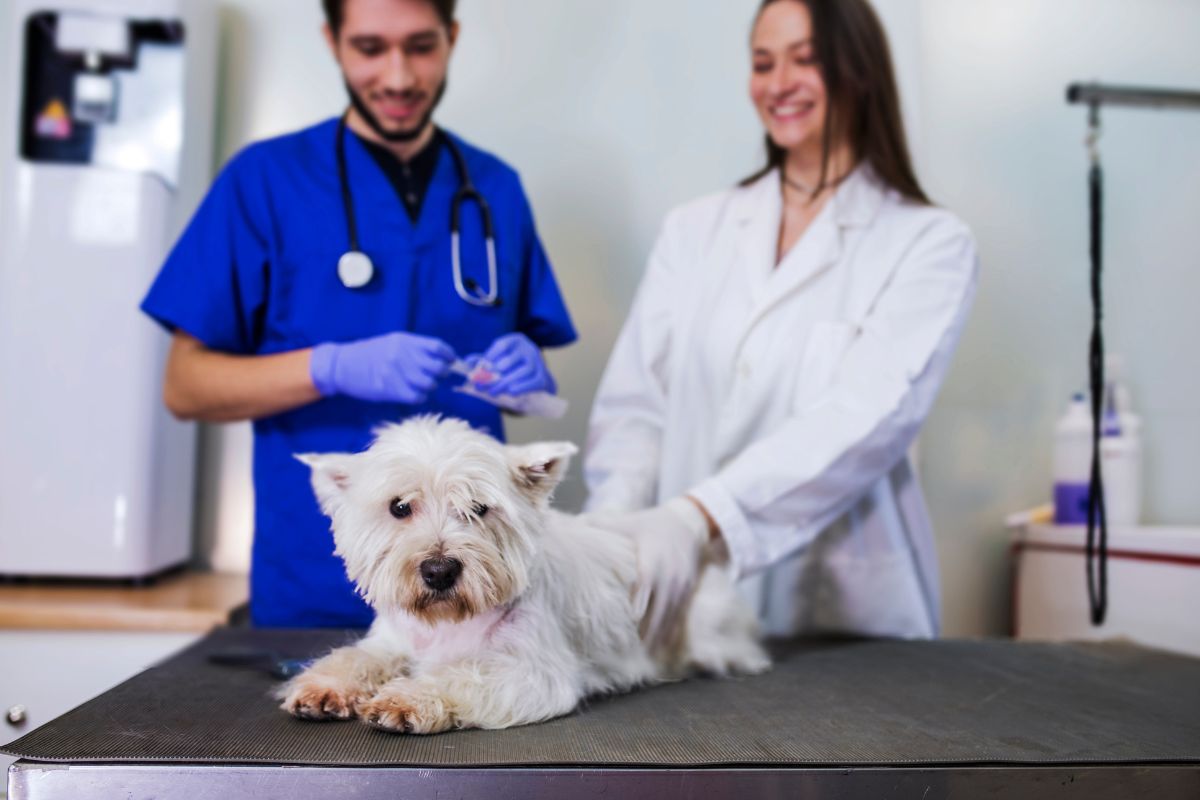What is Veterinary Technology?
The science and practice of assisting veterinarians professionally is veterinary technology. Veterinary technicians, also known as “vet techs,” offer various services to help licensed veterinarians.
Veterinarian technicians often carry out tasks for animals comparable to what a nurse may do for people. When diagnosing and treating sick and healthy animals, they assist veterinarians. This article will highlight books to help you in your vet tech schooling journey.
7 Books to Prepare Your for the Veterinary Technology Sector
Principles and Practice of Veterinary Technology 4th Edition
By Margi Sirois
About This Book
The fourth edition of Principles and Practice of Veterinary Technology can assist you in preparing for veterinary technician credentialing examinations and clinical practice.
You will acquire strong critical thinking and independent work abilities with the help of this comprehensive text, which is up to date with the most recent advancements in the field.
This expanded coverage extends to a variety of fields, including complementary medicine, urgent care, health insurance for pets, and toxicology, to name a few of them. An emphasis is on your roles and duties for all the needed psychomotor approaches throughout the more than 80 comprehensive procedures available throughout the text.
In addition, you may easily locate vital information thanks to the dozens of available summary tables and boxes.
- You can access additional learning tools on an up-to-date companion website, which contains a selection of questions to test your knowledge.
- By carefully following procedures that are in step-by-step directions, one can simplify the process of acquiring the core skills that are a requirement to become a competent veterinary technician.
- The most important information is in tables and boxes in summary, which makes the material that was previously difficult to understand simpler.
- Through clinical discussion of the technician’s function, you will be able to concentrate on your responsibilities in every aspect of your profession, making it possible for you to do so.
- NEW! Expanding coverage for alternative medicine, critical care, pet health insurance, and toxicology are examples of how veterinary technology has advanced over the years.
- NEW! You will better understand and retain the material if you answer review questions throughout the text.
Formats: Kindle, free app, paperback
Edition: 4th
Publisher: Mosby
Publication date: October 3, 2016
Language: English
Print length: 896 pages
Assessing Essential Skills of Veterinary Technology Students
By Laurie J. Buell, Lisa E. Schenkel, Sabrina Timperman
About This Book
This textbook will significantly assist the teaching staff in enhancing or retooling the abilities that are a part of the curriculum. The standard criteria or learning outcomes are rational, precise, purposeful, and centered on the learner.
The course material for our veterinary technology program, which has been around for some time, was just updated. This textbook is a beneficial guide because it refreshed our memories of the behaviors, information, and decision-making capabilities necessary for each necessary ability.
The third edition of Assessing Essential Abilities of Veterinary Technology Students offers students and teachers concise guidance on evaluating student performance in the skills necessary to enter the veterinary technology profession.
The book covers management, pharmacology, medical nursing, anesthesia and analgesia, surgical nursing, laboratory procedures, radiography, exotic animal nursing, and care for laboratory animals. The emphasis is on knowledge, the capacity to solve problems on one’s own, and practical experience.
Because these standardized evaluation standards are in place, it is now much simpler for teachers to compare the students’ levels of achievement accurately and objectively.
This book includes skill lists outlining the fundamental abilities that veterinary technologists and technicians must possess to begin their careers. Because it describes important skills, both students and teachers can benefit from reading this book.
A resource is as important as Assessing Essential Skills of Veterinary Technology Students. It needs to be accessible to instructors and students who enroll in accredited veterinary technology programs. The following are some of the book’s most notable qualities:
- Students receive guidance that is crystal clear concerning their capabilities as well as the criteria that you will utilize to evaluate their overall performance.
- It offers educators a standardized structure upon which to base their assessments of the academic accomplishments of their students.
- Offers comparison tools for the many different competency standards
- This course includes management, pharmacology, medical nursing, anesthesia and analgesia, surgical nursing, laboratory operations, radiography, care for laboratory animals, and nursing of exotic animals.
- This purchase includes access to a companion website with a log that you can download and use to keep track of your progress.
- This book is readable on Kindle e-readers, fire tablet devices, the free Kindle apps (which are available for iOS, Android, PC, and mac), and other Amazon devices.
Format: Kindle, free app, paperback
Edition: 3rd
Publisher: Wiley-Blackwell
Publication date: February 14, 2017
Language: English
File size: 900 KB
Print length : 81 pages
Principles and Practice of Veterinary Technology 3rd Edition
By Margi Sirois
About This Book
This new edition of Principles and Practice of Veterinary Technology, which is now accessible in full color, provide an extensive study of the skills required of all veterinary technicians. Instructions in a step-by-step format emphasize the technician’s role and responsibilities at every procedure stage.
In addition, dozens of newly added summary tables and boxes make it very easy to retrieve the required information. This version, produced by Margi Sirois, an experienced veterinary technician educator, is a great resource for preparation for clinical practice and veterinary technician credentialing examinations. It contains the following information;
- Comprehensive Coverage provides a set of competencies reflective of contemporary veterinary technology practice.
- An extensive collection of 82 illustrated, step-by-step procedures are available in this book, and it contains instructions for all the psychomotor methods required by the AVMA.
- Throughout every process, a significant focus is on clinical explanations of the technician’s function.
- The expert authors are vet tech educators who are familiar with your requirements and have the ability to communicate in a way that is clear and concise.
- Incorporate acupuncture and herbal medicine into your clinical practice with the help of the new chapter on physical therapy, rehabilitation, and alternative medicine. This chapter will guide you through the process.
- The scope of this work includes procedures for handling, restraint, and examining wildlife, including birds, reptiles, and amphibians. Previously, this work only covered exotic species. Learning about these subjects is simpler by the inclusion of over 900 images and illustrations that depict in full-color various diseases, conditions, and treatments.
- Learning about a challenging topic will become less difficult if additional tables and boxes explaining key facts are available.
Formats: Paperback
Edition: 3rd
Publisher: Mosby
Publication date: January 3, 2011
Language: English
Print length: 864 pages
Workbook for Principles and Practice of Veterinary Technology 3rd Edition
By Margi Sirois
About This Book
You should have no trouble learning the information in your textbook using this helpful study aid.
This workbook, which corresponds to the chapters of Principles and Practice of Veterinary Technology, Third Edition, provides you with various activities, games, and review questions, among other things, to assist you in grasping and implementing the subject matter.
Examples of learning activities include case presentations, clinical applications, word searches, and crossword puzzles. Other examples include definitions of essential terminology, exercises in comprehension (short essays), matching questions, photo quizzes, completion questions (fill-in-the-blank), multiple choice, and completion questions.
To aid you with concentrating on the most essential ideas and comprehending how the knowledge pertains to the practice of veterinary medicine, the objectives of each chapter parallel those indicated in the textbook included with this resource.
Formats: Etextbook, free app, paperback
Edition: 3rd
Publisher: Mosby
Publication date: January 10, 2011
Language: English
Print length: 336 pages
Veterinary Assisting Fundamentals & Applications (Veterinary Technology) 1st Edition
By Beth Vanhorn and Robert Clark
About This Book
Students get the opportunity to gain the skills necessary to succeed in the veterinary assisting profession using a comprehensive strategy that is all-encompassing and comprehensive through the course Veterinary Assisting Fundamentals and Applications.
The book begins with more fundamental skills such as office procedures and vocabulary used in veterinary medicine. After that, it covers more complex abilities, such as radiography and nursing care.
There is a part that discusses the production of animals as well as their management. It covers both domesticated and wild animals and large and unusual species. Each chapter presents a clinical scenario that illustrates how you may use the skills you’ve learned in the real world.
Formats: ETextbook, free app, hardcover
Edition: 1st
Publisher: Cengage Learning
Publication date: June 22, 2010
Language: English
Print length: 960 pages
Fundamentals of Pharmacology for Veterinary Technicians (Veterinary Technology) 2nd Edition
By Janet Amundson Romich
About This Book
With the help of this book, you may build a strong foundation for your understanding of how medications can help animals and how they can injure them.
The second edition takes a body-systems approach. It makes it simple to connect fundamental anatomy and physiology and the drugs that treat diseases that affect specific body systems.
This is possible because the book adopts an approach that uses the term “body systems.” A strong foundation in drug administration, pharmacokinetics, measuring techniques, prescription approval, and safety is a requirement to appreciate the ideas necessary to safely administer pharmaceuticals and understand the actions involved in pharmacological processes.
This publication includes a study that provides the reader with several additional practice opportunities, such as quizzes and games.
Formats: Paperback, e-textbook, free app,
Edition: 2nd
Publisher: Cengage Learning
Publication date: March 2, 2010
Language: English
Print length: 704 pages
Restraint & Handling for Veterinary Technicians & Assistants (Veterinary Technology) 1st Edition
by Bonnie Ballard, Jody Rockett
About This Book
Students taking the course Restraint and Handling for Veterinary Technicians and Assistants gain the necessary knowledge. This helps them to securely confine animals in a way that poses no risks to the restrained animal or the person applying the restraint.
Restraint and Handling for Veterinary Technicians and Assistants are in the how-to guide style. It includes the information necessary for the appropriate restraint of various species, including small, large, and exotic animals. Exotic creatures are the primary topic of discussion throughout the book.
The material includes a glossary of terms and practice problems at the end of each chapter. Additionally, it illustrates the most typical techniques used for restraint in veterinary practice. These features are available so that they may be of assistance to the reader.
Formats: Kindle, free app, paperback
Edition:1st
Publisher: Cengage Learning
Publication date: February 24, 2009
Language: English
Print length: 144 pages
















How to Obtain Veterinary Technician Certification
Veterinary technicians are essential in ensuring that animals retain good health by administering preventative care, curative therapy, medical intervention, surgical procedures, and rehabilitation.
In most cases, veterinarians are the ones who direct the work of these specialists, and they are responsible for a wide variety of additional responsibilities, all of which have the overarching goal of ensuring the health of animals.
You should complete vet tech training and acquire certification in your state to work as a veterinary technician on a professional level. This article explains what a veterinary technician is, the duties that these professionals are responsible for, the four different certification routes that are accessible, and the six stages required to get these credentials.
What Exactly is a Vet Tech?
Together, veterinarians, veterinary technologists, and veterinary assistants work closely with veterinary technicians, often known as vet techs, to improve their patient’s overall health and wellbeing. They are responsible for assisting veterinarians in treating various animal species, including livestock, domestic pets, and wild animals, in their capacity as clinical nurses.
Vet techs can find work in various settings, including veterinary practices, research facilities, zoos, wildlife medical facilities, the private sector, the military, animal health clinics, pharmaceutical sales, and other places. The type of work they do depends on their individual interests and the opportunities available to them.
What Responsibilities Does a Veterinary Technician Have?
In veterinary clinics, several clinical responsibilities are the responsibility of veterinary technicians.
When it is necessary, they take on responsibilities such as the admission of animal patients, the performance of physical examinations and assessments, the administration of medication, the education of clients, the work done in the laboratory, the collection of specimens, the radiological examination, surgical nursing, and other tasks.
A veterinary technician’s clinical responsibilities may vary from location to location. In some states, veterinary technicians can only operate as clinical assistants. Some will make it possible for them to perform high-level clinical care positions. The following is a list of instances of daily work:
- Gathering medical history
- First investigation
- Collecting vital signs
- Collecting blood
- Urinalysis and blood tests
- Immediate first aid
- Laboratory techniques
- Performing X-rays
- Medicine administration
- Anesthesia
- Educating customers
- Animal preparation for surgery
- Helping the veterinarian during surgery
- Sterilizing surgical and diagnostic equipment
Vet techs may work with wild animals, domesticated pets, rural livestock, zoo animals, and species housed in research facilities, depending on their workplace. Vet techs can now choose to specialize in a certain area of veterinary medicine or work with a particular animal species, thanks to the expansion of the veterinary field.
The National Association of Veterinary Technicians in America (NAVTA) now recognizes several veterinary technician specializations, including:
- Inside medicine
- Critical and urgent care
- Anesthesia
- Dentistry
- Behavior
- Veterinary medicine
- Horse nursing
- A clinical setting
- Nourishment for animals
- Diagnostic pathology
Which Veterinary Technology Certifications Exist?
Vet techs often complete school coursework and formal training to earn the certification necessary to work in the industry. Vet tech credentials come in four main categories and train people to execute related duties. These certificates are comparable as they allow vet techs to perform the same job.
However, a professional’s specific certification will typically rely on the regulations set forth by their state of residence. As previously indicated, certain states’ credentials allow veterinary technicians to do specific clinical tasks.
In contrast, others will enable them to perform supportive functions under a veterinarian’s supervision. The certification choices available to aspiring veterinary technicians around the nation are here:
Veterinarian Technician With Registration
A professional listed on a registry of employed veterinary technicians in a state or area is a registered veterinary technician (RVT). Most states do not require certification. Most individuals pass the national veterinary technician examination (VTNE).
Licensed Veterinary Technician
Typically, the greatest degree of certification a vet tech can earn in a given state is a licensed veterinary technician (LVT).
LVT credentials recognize professionals who fulfill particular training requirements, national ace tests and obtain local governing body authorization to work in the veterinary industry. LVTs are typically for professionals who reside in states that require licensure.
Certified Veterinary Technician
Professionals can voluntarily earn the designation of certified veterinary technician (CVT) through independent certifying authorities, such as private organizations. Professionals receiving CVTs often have to pass the VTNE and, if they want, register with their state. States that don’t require certification for vet techs to practice have a high demand for CVTs.
Veterinary Technician Specialist
A specialized qualification called a veterinary technician specialist (VTS) is available. This is for vet techs who want to further their careers after working in the industry and accumulating a particular amount of experience. With VTS credentials, technicians can work in the fields above as well as emergency care, critical care, anesthesia, dentistry, and surgery.
How to Become Certified as a Vet Tech
Your school level, professional experience, and the requirements established by the state’s local veterinary association will all play a role in determining the precise path you should pursue to obtain your vet tech certification.
There are a few crucial actions you should think about while you work toward your credentials while keeping these concerns in mind. The following six stages will help you become certified as a vet tech:
Get a High School Diploma or its Equivalent
Getting your high school diploma or comparable veterinary technology degrees should be your initial step in becoming a certified vet tech. Most certified veterinary technician programs only accept applicants who have completed high school.
This is because graduating from high school might enable you to develop a strong foundation of abilities and knowledge in fields like physics and mathematics, which are essential for working in the veterinary industry. Additionally, your high school education may aid in developing vital soft skills that will be helpful in the workplace, such as communication and time management.
Examine the Licensure Requirements in Your State
It’s a good idea to look into your state’s veterinary technician license requirements while you’re still in high school. The qualifications for candidates vary by state. For instance, California mandates that veterinary technicians; pass the VTNE and complete several clinical rotations to gain experience.
They should also graduate from an RVT program approved by the American Veterinary Medical Association (AMVA) or the California Veterinary Medical Board (VMB). There are fewer prerequisites to become a qualified vet tech in other areas, like Florida.
To be sure you’re taking the necessary measures to obtain your certification, you should research the requirements in your state. By doing this, you can advance your career and save time and effort searching for qualifications your state would accept.
Enroll in an Accredited Veterinary Technician Program
Regardless of their certification criteria, most states need individuals to enroll in a veterinary technician school approved by the AMVA to learn crucial skills and build knowledge to help them succeed in their jobs. After two years, candidates who complete these programs often graduate with an associate vet tech degree.
Various educational institutions, including technical schools, community colleges, and four-year universities, offer veterinary technology programs in both on-campus and online formats.
Even though a two-year program is the most common choice, some applicants choose to complete a four-year Bachelor of Veterinary Technology degree program instead. This depends on their career objectives.
Take and Pass the Veterinary Technician National Examination
The American Association of Veterinary State Boards sponsors the veterinary technician national examination, which you can take after completing an accredited veterinary technician program. The three-times-per-year computed-based exam typically lasts three hours in total. There are 170 multiple-choice questions in it.
Candidates perform tests on nine topics throughout the VTNE. This includes; pharmacy and pharmacology, surgical nursing, dentistry, lab techniques, anesthesia, animal care and nursing, pain management, analgesia, emergency medicine, critical care, and diagnostic imaging.
You can utilize the AASVB’s online practice exams or the VTNE website to find study resources to prepare for the test.
Complete any Clinical Hours That Your State Mandates
In several areas, veterinary technicians must complete a predetermined amount of clinical hours before they may apply for certification. You should finish any clinical hours necessary to get certified following the requirements you discovered through your investigation in step three.
These clinical hours will give you the practical experience needed to comprehend the inner workings of the veterinary profession and be successful as a vet tech. Several vet tech programs allow candidates to complete clinical rotations while earning their veterinary technology bachelor’s degrees to speed up the certification process.
Obtain Certification and Sign Up to Work as a Veterinary Technician
You can apply for your credentials once you have; graduated from an AMVA-accredited veterinary technician program, passed the VTNE, and finished the necessary clinical hours by the state regulatory agency.
If you get approval and a license to work as a vet tech in your state, you can register as a professional in the industry and show up on a list of active vet techs. You can pursue employment in various veterinary and animal care situations thanks to your qualification and registration.
Parting Words
Are you a student at any veterinary technology schools? If yes, you will require a lot of research and reading. This guide has books that are essential for your studies. You can find time and read them to make your journey successful.
We like the Principles and Practice of Veterinary Technology 3rd Edition by Margi Sirois because it provides you with comprehensive coverage of the competencies reflective of contemporary veterinary technology practice. Please make use of it today!












